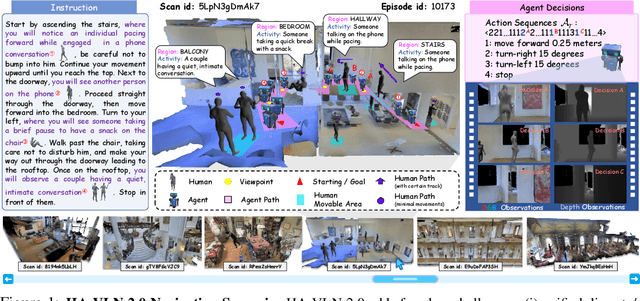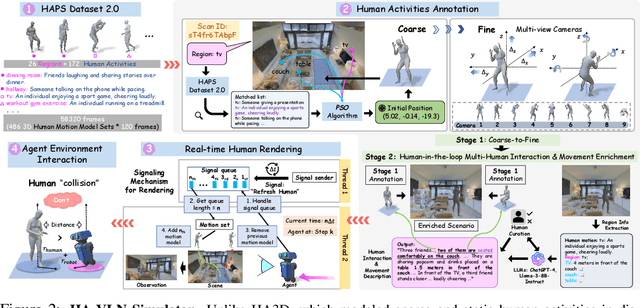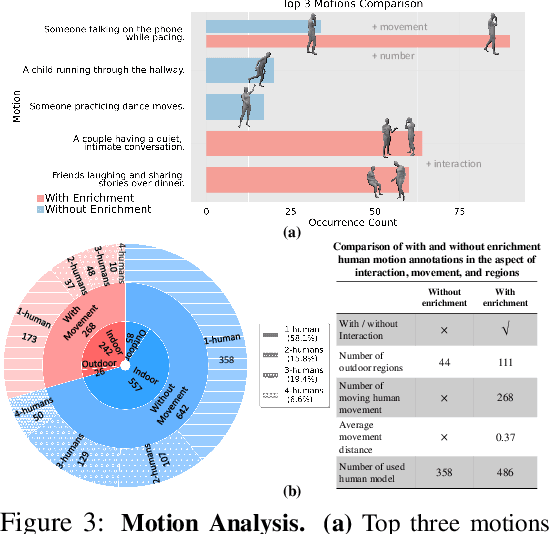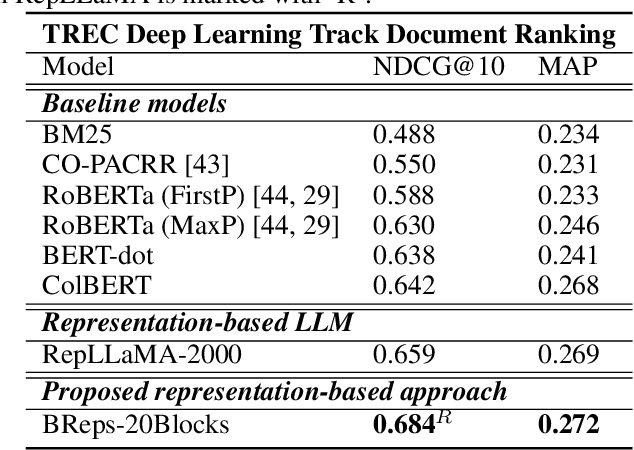Minghan Li
SplitFlow: Flow Decomposition for Inversion-Free Text-to-Image Editing
Oct 29, 2025Abstract:Rectified flow models have become a de facto standard in image generation due to their stable sampling trajectories and high-fidelity outputs. Despite their strong generative capabilities, they face critical limitations in image editing tasks: inaccurate inversion processes for mapping real images back into the latent space, and gradient entanglement issues during editing often result in outputs that do not faithfully reflect the target prompt. Recent efforts have attempted to directly map source and target distributions via ODE-based approaches without inversion; however,these methods still yield suboptimal editing quality. In this work, we propose a flow decomposition-and-aggregation framework built upon an inversion-free formulation to address these limitations. Specifically, we semantically decompose the target prompt into multiple sub-prompts, compute an independent flow for each, and aggregate them to form a unified editing trajectory. While we empirically observe that decomposing the original flow enhances diversity in the target space, generating semantically aligned outputs still requires consistent guidance toward the full target prompt. To this end, we design a projection and soft-aggregation mechanism for flow, inspired by gradient conflict resolution in multi-task learning. This approach adaptively weights the sub-target velocity fields, suppressing semantic redundancy while emphasizing distinct directions, thereby preserving both diversity and consistency in the final edited output. Experimental results demonstrate that our method outperforms existing zero-shot editing approaches in terms of semantic fidelity and attribute disentanglement. The code is available at https://github.com/Harvard-AI-and-Robotics-Lab/SplitFlow.
TrackVLA++: Unleashing Reasoning and Memory Capabilities in VLA Models for Embodied Visual Tracking
Oct 08, 2025Abstract:Embodied Visual Tracking (EVT) is a fundamental ability that underpins practical applications, such as companion robots, guidance robots and service assistants, where continuously following moving targets is essential. Recent advances have enabled language-guided tracking in complex and unstructured scenes. However, existing approaches lack explicit spatial reasoning and effective temporal memory, causing failures under severe occlusions or in the presence of similar-looking distractors. To address these challenges, we present TrackVLA++, a novel Vision-Language-Action (VLA) model that enhances embodied visual tracking with two key modules, a spatial reasoning mechanism and a Target Identification Memory (TIM). The reasoning module introduces a Chain-of-Thought paradigm, termed Polar-CoT, which infers the target's relative position and encodes it as a compact polar-coordinate token for action prediction. Guided by these spatial priors, the TIM employs a gated update strategy to preserve long-horizon target memory, ensuring spatiotemporal consistency and mitigating target loss during extended occlusions. Extensive experiments show that TrackVLA++ achieves state-of-the-art performance on public benchmarks across both egocentric and multi-camera settings. On the challenging EVT-Bench DT split, TrackVLA++ surpasses the previous leading approach by 5.1 and 12, respectively. Furthermore, TrackVLA++ exhibits strong zero-shot generalization, enabling robust real-world tracking in dynamic and occluded scenarios.
A Survey of Long-Document Retrieval in the PLM and LLM Era
Sep 09, 2025



Abstract:The proliferation of long-form documents presents a fundamental challenge to information retrieval (IR), as their length, dispersed evidence, and complex structures demand specialized methods beyond standard passage-level techniques. This survey provides the first comprehensive treatment of long-document retrieval (LDR), consolidating methods, challenges, and applications across three major eras. We systematize the evolution from classical lexical and early neural models to modern pre-trained (PLM) and large language models (LLMs), covering key paradigms like passage aggregation, hierarchical encoding, efficient attention, and the latest LLM-driven re-ranking and retrieval techniques. Beyond the models, we review domain-specific applications, specialized evaluation resources, and outline critical open challenges such as efficiency trade-offs, multimodal alignment, and faithfulness. This survey aims to provide both a consolidated reference and a forward-looking agenda for advancing long-document retrieval in the era of foundation models.
Query Expansion in the Age of Pre-trained and Large Language Models: A Comprehensive Survey
Sep 09, 2025Abstract:Modern information retrieval (IR) must bridge short, ambiguous queries and ever more diverse, rapidly evolving corpora. Query Expansion (QE) remains a key mechanism for mitigating vocabulary mismatch, but the design space has shifted markedly with pre-trained language models (PLMs) and large language models (LLMs). This survey synthesizes the field from three angles: (i) a four-dimensional framework of query expansion - from the point of injection (explicit vs. implicit QE), through grounding and interaction (knowledge bases, model-internal capabilities, multi-turn retrieval) and learning alignment, to knowledge graph-based argumentation; (ii) a model-centric taxonomy spanning encoder-only, encoder-decoder, decoder-only, instruction-tuned, and domain/multilingual variants, highlighting their characteristic affordances for QE (contextual disambiguation, controllable generation, zero-/few-shot reasoning); and (iii) practice-oriented guidance on where and how neural QE helps in first-stage retrieval, multi-query fusion, re-ranking, and retrieval-augmented generation (RAG). We compare traditional query expansion with PLM/LLM-based methods across seven key aspects, and we map applications across web search, biomedicine, e-commerce, open-domain QA/RAG, conversational and code search, and cross-lingual settings. The review distills design grounding and interaction, alignment/distillation (SFT/PEFT/DPO), and KG constraints - as robust remedies to topic drift and hallucination. We conclude with an agenda on quality control, cost-aware invocation, domain/temporal adaptation, evaluation beyond end-task metrics, and fairness/privacy. Collectively, these insights provide a principled blueprint for selecting and combining QE techniques under real-world constraints.
VideoITG: Multimodal Video Understanding with Instructed Temporal Grounding
Jul 17, 2025Abstract:Recent studies have revealed that selecting informative and relevant video frames can significantly improve the performance of Video Large Language Models (Video-LLMs). Current methods, such as reducing inter-frame redundancy, employing separate models for image-text relevance assessment, or utilizing temporal video grounding for event localization, substantially adopt unsupervised learning paradigms, whereas they struggle to address the complex scenarios in long video understanding. We propose Instructed Temporal Grounding for Videos (VideoITG), featuring customized frame sampling aligned with user instructions. The core of VideoITG is the VidThinker pipeline, an automated annotation framework that explicitly mimics the human annotation process. First, it generates detailed clip-level captions conditioned on the instruction; then, it retrieves relevant video segments through instruction-guided reasoning; finally, it performs fine-grained frame selection to pinpoint the most informative visual evidence. Leveraging VidThinker, we construct the VideoITG-40K dataset, containing 40K videos and 500K instructed temporal grounding annotations. We then design a plug-and-play VideoITG model, which takes advantage of visual language alignment and reasoning capabilities of Video-LLMs, for effective frame selection in a discriminative manner. Coupled with Video-LLMs, VideoITG achieves consistent performance improvements across multiple multimodal video understanding benchmarks, showing its superiority and great potentials for video understanding.
TrackVLA: Embodied Visual Tracking in the Wild
May 29, 2025Abstract:Embodied visual tracking is a fundamental skill in Embodied AI, enabling an agent to follow a specific target in dynamic environments using only egocentric vision. This task is inherently challenging as it requires both accurate target recognition and effective trajectory planning under conditions of severe occlusion and high scene dynamics. Existing approaches typically address this challenge through a modular separation of recognition and planning. In this work, we propose TrackVLA, a Vision-Language-Action (VLA) model that learns the synergy between object recognition and trajectory planning. Leveraging a shared LLM backbone, we employ a language modeling head for recognition and an anchor-based diffusion model for trajectory planning. To train TrackVLA, we construct an Embodied Visual Tracking Benchmark (EVT-Bench) and collect diverse difficulty levels of recognition samples, resulting in a dataset of 1.7 million samples. Through extensive experiments in both synthetic and real-world environments, TrackVLA demonstrates SOTA performance and strong generalizability. It significantly outperforms existing methods on public benchmarks in a zero-shot manner while remaining robust to high dynamics and occlusion in real-world scenarios at 10 FPS inference speed. Our project page is: https://pku-epic.github.io/TrackVLA-web.
HA-VLN: A Benchmark for Human-Aware Navigation in Discrete-Continuous Environments with Dynamic Multi-Human Interactions, Real-World Validation, and an Open Leaderboard
Mar 18, 2025



Abstract:Vision-and-Language Navigation (VLN) systems often focus on either discrete (panoramic) or continuous (free-motion) paradigms alone, overlooking the complexities of human-populated, dynamic environments. We introduce a unified Human-Aware VLN (HA-VLN) benchmark that merges these paradigms under explicit social-awareness constraints. Our contributions include: 1. A standardized task definition that balances discrete-continuous navigation with personal-space requirements; 2. An enhanced human motion dataset (HAPS 2.0) and upgraded simulators capturing realistic multi-human interactions, outdoor contexts, and refined motion-language alignment; 3. Extensive benchmarking on 16,844 human-centric instructions, revealing how multi-human dynamics and partial observability pose substantial challenges for leading VLN agents; 4. Real-world robot tests validating sim-to-real transfer in crowded indoor spaces; and 5. A public leaderboard supporting transparent comparisons across discrete and continuous tasks. Empirical results show improved navigation success and fewer collisions when social context is integrated, underscoring the need for human-centric design. By releasing all datasets, simulators, agent code, and evaluation tools, we aim to advance safer, more capable, and socially responsible VLN research.
FiVE: A Fine-grained Video Editing Benchmark for Evaluating Emerging Diffusion and Rectified Flow Models
Mar 17, 2025Abstract:Numerous text-to-video (T2V) editing methods have emerged recently, but the lack of a standardized benchmark for fair evaluation has led to inconsistent claims and an inability to assess model sensitivity to hyperparameters. Fine-grained video editing is crucial for enabling precise, object-level modifications while maintaining context and temporal consistency. To address this, we introduce FiVE, a Fine-grained Video Editing Benchmark for evaluating emerging diffusion and rectified flow models. Our benchmark includes 74 real-world videos and 26 generated videos, featuring 6 fine-grained editing types, 420 object-level editing prompt pairs, and their corresponding masks. Additionally, we adapt the latest rectified flow (RF) T2V generation models, Pyramid-Flow and Wan2.1, by introducing FlowEdit, resulting in training-free and inversion-free video editing models Pyramid-Edit and Wan-Edit. We evaluate five diffusion-based and two RF-based editing methods on our FiVE benchmark using 15 metrics, covering background preservation, text-video similarity, temporal consistency, video quality, and runtime. To further enhance object-level evaluation, we introduce FiVE-Acc, a novel metric leveraging Vision-Language Models (VLMs) to assess the success of fine-grained video editing. Experimental results demonstrate that RF-based editing significantly outperforms diffusion-based methods, with Wan-Edit achieving the best overall performance and exhibiting the least sensitivity to hyperparameters. More video demo available on the anonymous website: https://sites.google.com/view/five-benchmark
Enhanced Retrieval of Long Documents: Leveraging Fine-Grained Block Representations with Large Language Models
Jan 28, 2025



Abstract:In recent years, large language models (LLMs) have demonstrated exceptional power in various domains, including information retrieval. Most of the previous practices involve leveraging these models to create a single embedding for each query, each passage, or each document individually, a strategy exemplified and used by the Retrieval-Augmented Generation (RAG) framework. While this method has proven effective, we argue that it falls short in fully capturing the nuanced intricacies of document-level texts due to its reliance on a relatively coarse-grained representation. To address this limitation, we introduce a novel, fine-grained approach aimed at enhancing the accuracy of relevance scoring for long documents. Our methodology firstly segments a long document into blocks, each of which is embedded using an LLM, for matching with the query representation. When calculating the relevance score, we aggregate the query-block relevance scores through a weighted sum method, yielding a comprehensive score for the query with the entire document. Despite its apparent simplicity, our experimental findings reveal that this approach outperforms standard representation methods and achieves a significant reduction in embedding generation latency. Moreover, by carefully optimizing pairwise loss functions, superior performances have been achieved.
Uni-NaVid: A Video-based Vision-Language-Action Model for Unifying Embodied Navigation Tasks
Dec 09, 2024Abstract:A practical navigation agent must be capable of handling a wide range of interaction demands, such as following instructions, searching objects, answering questions, tracking people, and more. Existing models for embodied navigation fall short of serving as practical generalists in the real world, as they are often constrained by specific task configurations or pre-defined maps with discretized waypoints. In this work, we present Uni-NaVid, the first video-based vision-language-action (VLA) model designed to unify diverse embodied navigation tasks and enable seamless navigation for mixed long-horizon tasks in unseen real-world environments. Uni-NaVid achieves this by harmonizing the input and output data configurations for all commonly used embodied navigation tasks and thereby integrating all tasks in one model. For training Uni-NaVid, we collect 3.6 million navigation data samples in total from four essential navigation sub-tasks and foster synergy in learning across them. Extensive experiments on comprehensive navigation benchmarks clearly demonstrate the advantages of unification modeling in Uni-NaVid and show it achieves state-of-the-art performance. Additionally, real-world experiments confirm the model's effectiveness and efficiency, shedding light on its strong generalizability.
 Add to Chrome
Add to Chrome Add to Firefox
Add to Firefox Add to Edge
Add to Edge